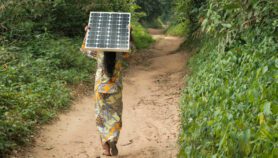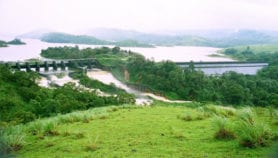By: Peng Kuang
Send to a friend
The details you provide on this page will not be used to send unsolicited email, and will not be sold to a 3rd party. See privacy policy.
A remote Chinese island is installing a power station that will harness the wind, sun and waves to produce energy and fresh water.
Situated on Dangan Island in the South China Sea, the station should provide 80 per cent of the energy requirements of its 300 inhabitants. A desalination facility will provide 10,000 tons of water per year.
"Before this, there were only [power stations] combining wind and solar [energy]," says You Yage, an ocean energy researcher at the Guangzhou Institute of Energy Conversion, part of the Chinese Academy of Sciences.
The wind power component of the generator is already active and the whole system will be completed in May this year, says You, who is leading the installation programme.
Inhabitants of the island — the most remote in the South China Sea — currently rely on a diesel generator for their electricity needs, which operates for 14 hours a day. As well as being emissions-intensive it is expensive and wastes energy because it runs continuously.
The new power station will have a net output of 105 kilowatts: 90 from wind power, ten from wave power, and five kilowatts from solar power.
It will supply energy 24 hours a day. The energy will be stored in batteries before being used so that no energy is wasted.
Liu Xinying, an engineering consultant at the University of the Witwatersrand, South Africa, says the plant is a good attempt at renewable energy integration.
"Considering the operation cost, it must have advantages [over] the diesel generator, and will significantly reduce diesel consumption on this island and thus emit less carbon dioxide," he told SciDev.Net.
But he questions the large allocation to wind power. "The seasons of high wind energy and high power demand may not coincide, which means we still need the diesel generator." Lui also criticised the high cost of installing the new plant.
But You defended the plant costs. "If we only calculate the spending on the construction of wind, solar and wave power facilities and their operation costs, the cost will be about three Chinese yuan (about US$0.4) per kilowatt hour, against 3.5 Chinese yuan (US$0.5) for the diesel generator," he says.
He admits that the project poses an environmental problem. Lead-acid batteries, which contain large amounts of lead, need to be disposed of carefully to avoid pollution. The system might switch to a vanadium battery, he says, which produces no waste products.













